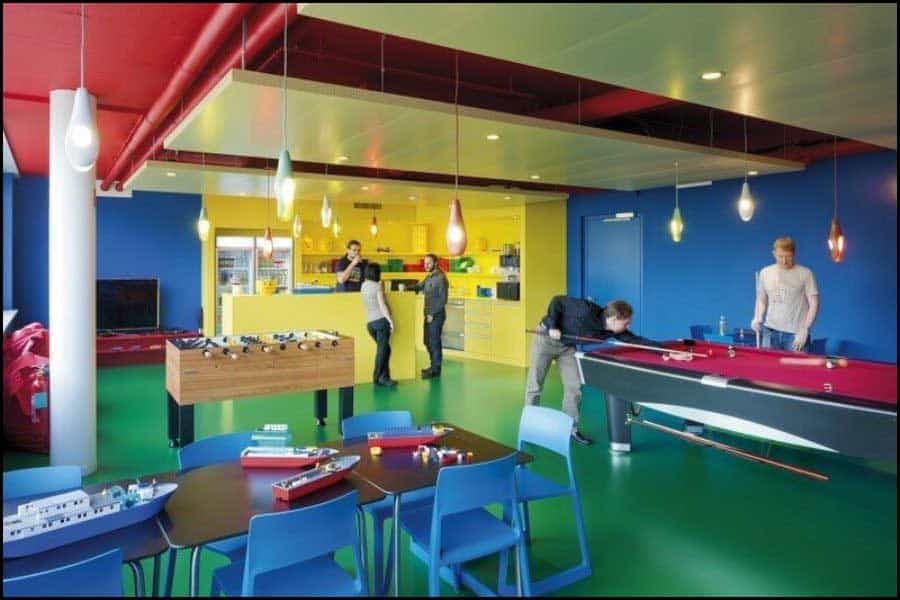The late nineties saw the rise of the over designed office. Workplace interiors resembled playgrounds, with as many novelty features as possible crammed into one space. Global companies such as Google and Red Bull were leaders of this trend, with a variety of organisations following suit. Many designers failed to ask themselves ‘how much is too much?’ (1). It was gradually realised that these gimmicky spaces weren’t stimulating the efficient workplace they were expected to. We are now experiencing workplace design that supports employee comfort both physically and mentally, providing a home away from home.
So what powered the playground-like phase? A major contributing conception; a stimulated workplace = a productive workplace. Whilst this is true, Ceri Davies of Allford Hall Monaghan Morris (the firm recently renovated Google’s London HQ) logically states “You can over-design a space to the point that it becomes an irritant” (1). Employees working within these wacky interiors soon began to complain about many factors such as lighting levels, noise and general discomfort (1).
Additionally, a common misconception surfaced that all companies would benefit from a playful workplace. Haworth researcher Gabor Nagy explained that the ‘I want to be like Google’ design concept started to backfire as not all organisations share the same culture as Google, “Employees hanging out in the game room or playing ping pong while working were not seen as creative innovators, but more like folks sabotaging their daily work.” (2)

With Australians spending increasingly longer hours at work (3), importance is now placed on comfort and adaptability within a workplace. This is mainly due to health and technology, which “isn’t just changing how we work but also the spaces we work in” (1). Dynamic spaces are crucial in office design as employees now have the flexibility and preference to work away from their conventional desk spaces, due to technological advancements.

While technology is certainly influencing businesses to accommodate new ways of working, there is also a major focus on wellbeing (3). Many people spend more time in their workplace than they do in their own homes. A new variety of spaces are now included in office design such as informal meeting zones, break out spaces and quiet rooms; not only to work but to be able to relax. We are also seeing the incorporation of nature in workplaces and home comforts, all to promote mental wellbeing (1). Even Google has matured, their renovated offices worldwide feature rugs, floor lamps, sofas and other domestic luxuries (1).

No longer are designers focusing on what other novelty features they can include within a workplace, but what they can incorporate to make people feel more at home. We are observing the shift from the ‘playpen’ to the ‘home’ office. It’s now all about making the office a place where employees want to be, not only tangibly but also psychologically.
1. https://www.1843magazine.com/design/welcome-to-the-home-office
2. https://www.dezeen.com/2016/03/22/google-office-design-negative-effect-interiors-jeremy-myerson/
3. http://www.waterfrontplace.com.au/modern-offices-making-teams-feel-home-work/

